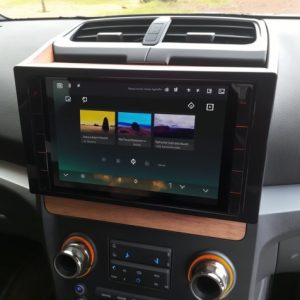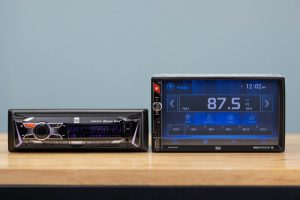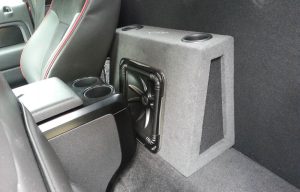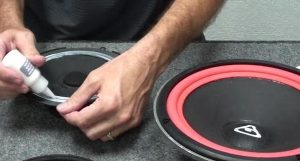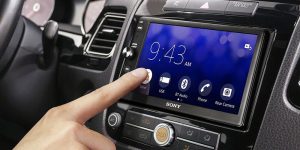Nothing ruins a road trip faster than a car radio that refuses to turn on. You hop into your vehicle, ready to blast your favorite tunes, only to be met with silence. Frustrating, right? A dead car stereo can stem from several issues, but the good news is that many problems are fixable with some basic troubleshooting. This guide walks you through the most common reasons your car radio won’t power up and provides practical solutions to get your audio system back in action. Whether you’re dealing with a blown fuse, faulty wiring, or an anti-theft lock, we’ve got you covered with clear, step-by-step advice.
Contents
Why Won’t Your Car Radio Turn On? Common Culprits
Before diving into repairs, understand the potential reasons behind your car radio’s silence. Several issues can cause a stereo to fail, ranging from simple fixes to more complex electrical problems. Let’s explore the most frequent causes and how to tackle them.
1. Blown Fuse: The Easiest Fix
A blown fuse ranks as the top reason car radios stop working. Fuses protect your vehicle’s electrical system by breaking the circuit during a power surge. If the fuse connected to your radio blows, the stereo loses power and won’t turn on. Checking the fuse is a quick and inexpensive starting point for troubleshooting.
How to Check and Fix a Blown Fuse:
- Locate the fuse box: Most vehicles have a fuse box under the dashboard, in the engine compartment, or near the battery. Consult your owner’s manual for the exact location.
- Identify the radio fuse: Look for a fuse labeled “RADIO,” “AUDIO,” or “INFOTAINMENT.” The manual or fuse box cover often includes a diagram.
- Inspect the fuse: Remove the fuse using a fuse puller or needle-nose pliers. Hold it up to light. A broken or melted metal strip inside indicates a blown fuse.
- Replace the fuse: Swap the blown fuse with a new one of the same amperage rating. Avoid using a higher-rated fuse, as it can damage your wiring or cause a fire.
- Test the radio: Turn on the ignition and check if the radio powers up.
Pro Tip: If the new fuse blows quickly, you likely have a short circuit or wiring issue. Don’t keep replacing fuses without addressing the root cause, as this risks further damage.[](https://www.lifewire.com/car-radio-suddenly-stopped-working-534704)
2. Wiring Issues: Loose or Damaged Connections
Faulty wiring often plagues car audio systems, especially in aftermarket setups. Loose, damaged, or incorrectly connected wires can cut power to your radio. Vibrations from driving or poor installation may loosen connections over time, leading to a dead stereo.
How to Troubleshoot Wiring Problems:
- Check the power wires: Car radios typically have two power wires—one constant (yellow, for memory) and one switched (red, active with ignition). Ensure both are securely connected.
- Inspect the ground wire: The ground wire (usually black) completes the circuit. A loose or corroded ground can prevent the radio from powering on. Look for a solid metal connection to the vehicle’s chassis.
- Use a multimeter: Set the multimeter to DC voltage and test the power wires. The constant wire should read around 12 volts at all times, and the switched wire should show 12 volts when the ignition is on.
- Look for damage: Examine wires for cuts, fraying, or pinched sections. Replace or repair damaged wiring.
Pro Tip: Aftermarket radios often require a wiring harness adapter for proper installation. Double-check that your harness matches your vehicle and radio model to avoid connection issues.[](https://www.lifewire.com/car-radio-wont-turn-on-534706)
3. Anti-Theft Mode: A Hidden Lock
Many factory-installed car radios feature an anti-theft system that locks the stereo after a power disruption, such as a dead or disconnected battery. When this mode activates, the radio may not turn on or may display a “CODE” or “LOCK” message.
How to Disable Anti-Theft Mode:
- Check the owner’s manual: Look for a specific code or procedure to unlock the radio. The code may be listed in the manual or on a card provided with the vehicle.
- Enter the code: Use the radio’s preset buttons or keypad to input the code. Follow the exact sequence outlined in the manual.
- Contact the dealership: If you can’t find the code, your vehicle’s manufacturer or dealership can provide it using the radio’s serial number.
- Reset the system: Some radios reset by disconnecting the battery for 15–20 minutes, then reconnecting and entering the code.
Pro Tip: Keep your radio’s anti-theft code in a safe place, like your glovebox, to avoid future headaches.[](https://www.electronicshub.org/car-stereo-wont-turn-on/)
4. Dead Battery or Alternator Issues
A weak or dead car battery can starve your radio of power. If other electrical components, like headlights or wipers, also fail, the battery or alternator may be the culprit. The alternator charges the battery while the engine runs, so a faulty one can lead to power shortages.
How to Test the Battery and Alternator:
- Check battery voltage: Use a multimeter to measure the battery’s voltage. A healthy battery reads 12.6 volts when the engine is off and 13.7–14.7 volts when running.
- Inspect battery terminals: Look for corrosion or loose connections. Clean terminals with a wire brush and tighten them.
- Test the alternator: If the battery voltage drops below 13.7 volts with the engine running, the alternator may not be charging properly.
- Replace or recharge: Charge a weak battery or replace a dead one. If the alternator is faulty, have it repaired or replaced by a professional.
Pro Tip: Avoid running the radio with the engine off for long periods, as this can drain the battery and trigger anti-theft mode.[](https://www.autozone.com/diy/electrical/cars-radio-not-working)
5. Faulty Radio Unit: When All Else Fails
If fuses, wiring, and the battery check out, the radio unit itself may have failed. Internal components can wear out, especially in older vehicles or aftermarket stereos subjected to power surges. A malfunctioning head unit may require repair or replacement.
How to Diagnose a Faulty Radio:
- Bench test the radio: Remove the radio and connect its power and ground wires directly to a 12-volt power source. If Ascertain if it powers on. If it doesn’t, the unit is likely defective.
- Check for recalls: Visit the NHTSA website to see if your vehicle’s radio has an open recall. Some manufacturers replace faulty units for free.
- Consult a professional: A car audio technician can diagnose internal faults and recommend repair or replacement.
Pro Tip: Before buying a new radio, compare the cost of repair versus replacement. OEM units can be pricey, but aftermarket options offer modern features like Bluetooth and USB connectivity.[](https://www.bramanminiofmiami.com/blog/2023/october/31/the-3-most-common-causes-your-car-radio-isn-t-working.htm)
Advanced Troubleshooting for Persistent Issues
If basic checks don’t resolve the problem, dive deeper into advanced diagnostics. These steps require more technical know-how but can pinpoint elusive issues.
6. Short Circuits: The Fuse-Blowing Culprit
Repeatedly blown fuses signal a short circuit, where a wire touches metal or another wire, causing excessive current flow. Shorts often occur in aftermarket installations or due to worn insulation.
How to Find a Short Circuit:
- Inspect wiring visually: Look for exposed copper, pinched wires, or wires touching metal surfaces.
- Use a multimeter: Set it to continuity mode and test between the power wire and ground. A beep indicates a short.
- Isolate the circuit: Disconnect components like amplifiers or speakers to narrow down the short’s location.
- Repair the short: Insulate exposed wires with electrical tape or replace damaged sections.
Pro Tip: Work carefully to avoid creating new shorts. Tape or sleeve wires to prevent future issues.[](https://www.yourmechanic.com/services/car-radio-is-not-working-inspection)
7. Pigtail Connector Problems
The pigtail connector links the radio to the vehicle’s wiring harness. A loose or damaged pigtail can disrupt power delivery, leaving your stereo dead.
How to Check the Pigtail Connector:
- Inspect the connector: Look for bent pins, corrosion, or loose fittings.
- Ensure a secure fit: Push the connector firmly into the radio until it clicks.
- Test continuity: Use a multimeter to check for consistent connections between the pigtail and wiring harness.
- Replace if needed: Damaged pigtails are inexpensive and available at auto parts stores.
Pro Tip: Apply dielectric grease to the connector to prevent corrosion, especially in humid climates.[](https://www.electronicshub.org/car-stereo-wont-turn-on/)
8. Software Glitches in Modern Infotainment Systems
Modern vehicles, like the Jeep Grand Cherokee or Chrysler Pacifica, rely on complex infotainment systems. Software glitches can freeze screens or prevent the radio from powering on.
How to Fix Software Issues:
- Check for updates: Visit the manufacturer’s website for over-the-air (OTA) software updates.
- Reset the system: Hold the power button for 10–20 seconds or disconnect the battery briefly to reboot the system.
- Consult a technician: Dealerships can reflash or update software to resolve persistent glitches.
Pro Tip: Regularly update your infotainment software to prevent bugs and improve compatibility with devices like smartphones.[](https://www.weeksinbenton.com/blogs/6412/5-reasons-your-cars-radio-may-not-be-working)
Preventing Future Radio Problems
Once your radio is back in action, take steps to keep it running smoothly. Preventive maintenance saves time and money in the long run.
- Turn off the radio before charging: Power surges during battery charging or jump-starting can fry your stereo. Switch it off to protect it.
- Use a trickle charger: If your battery is low, charge it slowly to avoid stressing electrical components.
- Clean the system: Dust buildup can cause overheating. Wipe the radio with a microfiber cloth periodically.
- Avoid extreme volumes: Playing music at maximum volume strains amplifiers and speakers, leading to early failure.
- Check for recalls: Regularly visit the NHTSA website to ensure your radio isn’t part of a recall.
Pro Tip: In humid climates, like Benton, keep your vehicle’s interior dry to prevent corrosion in wiring and connectors.[](https://www.weeksinbenton.com/blogs/6412/5-reasons-your-cars-radio-may-not-be-working)
When to Call a Professional
Some radio issues require expertise beyond DIY fixes. Seek professional help if:
- You can’t locate a short circuit or wiring fault.
- The radio remains dead after testing fuses, wiring, and the battery.
- Software issues persist despite updates or resets.
- You lack the tools or confidence to perform advanced diagnostics.
Certified technicians, like those at AutoZone or your local dealership, have specialized tools to diagnose and repair complex audio problems. They can also tune aftermarket systems for optimal performance.[](https://www.ebay.com/motors/blog/radio-not-working-try-this/)
Upgrading Your Car Audio System
If your radio is beyond repair, consider upgrading to a modern head unit. Aftermarket stereos offer features like:
- Bluetooth connectivity: Stream music wirelessly from your smartphone.
- Touchscreen displays: Navigate menus easily with vibrant screens.
- Apple CarPlay/Android Auto: Integrate your phone for navigation and apps.
- USB/AUX inputs: Play music from external devices.
Pro Tip: Choose a reputable brand like Pioneer, Kenwood, or Alpine for reliability. Ensure professional installation to avoid wiring issues.[](https://www.caraudionow.com/common-car-stereo-problems/)
Conclusion: Get Your Radio Rocking Again
A car radio that won’t turn on doesn’t have to ruin your drive. By methodically checking fuses, wiring, anti-theft modes, the battery, and the radio unit, you can often pinpoint and fix the problem yourself. For stubborn issues, advanced troubleshooting or professional help can save the day. Regular maintenance, like updating software and protecting against surges, keeps your audio system humming. Whether you revive your old stereo or upgrade to a feature-packed model, you’ll soon be cruising with your favorite tunes. Ready to troubleshoot? Grab your multimeter, check that fuse, and let’s get your car radio back to life!
Need parts or tools? Visit AutoZone for fuses, wiring harnesses, and multimeters. For professional repairs, contact your local dealership or a trusted car audio shop.

